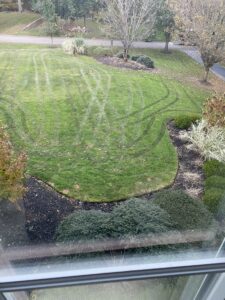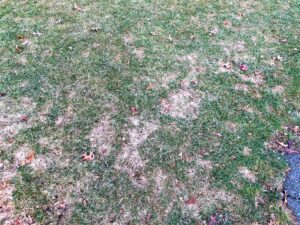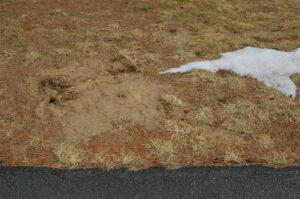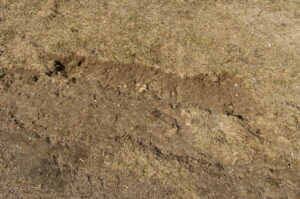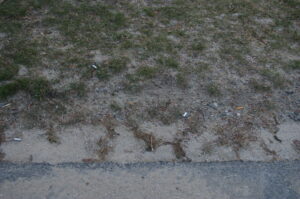You may have heard of winterizing an irrigation system, a boat, or your pool, but have you ever considered winterizing your lawn? This concept tends to be a bit of uncommon knowledge to those unfamiliar with the lawn care game, so we’re here to fill you in on all the ins and outs of why you should winterize your New England lawn each and every year.
Let’s start with the basics- what is lawn winterization? At its core, winterizing is the process of adapting and preparing the lawn for the types of severe weather that only an experienced New England resident can understand. What this really means is choosing the right product, time, and method to apply to the lawn before the temperatures drop and snowfall arrives. To those inexperienced with lawn care, this task can seem more daunting than it really is.
To start, you have to break out your Periodic Table of Elements. Fertilizers contain different levels of various elements based on the climate in order to keep things balanced and healthy. Most winterizing fertilizers contain a higher rate of Nitrogen than the standard, but pay very little attention to Potassium. Potassium is just as important for a lawn as it is for the human body, as it is what the grass blades’ cell walls are primarily made up of! As such, Potassium plays a major role in keeping cells strong enough to withstand the crazy climates we face here in Massachusetts like extreme drought, below freezing temperatures, and so on. Adding one last heavy dose before the winter months fortifies those cell walls, almost as if they’re putting on a winter coat, to keep an extra layer between the grass and the cold. Because of this, we at Lawn Doctor have created our own custom blend of lawn care products for winterizing. Our blend emphasizes Potassium over Nitrogen in order to be thorough and maintain the lawn’s hardiness, which will in turn prevent a die off when enduring severe winter weather. Grass that has forgone the winterizing application is lower on Potassium and, as such, will be less able to absorb and break down hydration and nutrients. As a result, the grass will start to yellow, wilt, and may even need a soil test to get the mineral composition back up to snuff.
So, why should you winterize your lawn? Without it, you may see your lawn decline throughout the wintertime, and could face a very slow bounce back once the spring does finally roll around. Utilizing a winterizing fertilizer ensures your grass’ root system has plenty of nutrients stored throughout the months of December through March, which it will then use once spring rolls around to return from that dreaded winter dormancy at a quicker pace than normal. Homeowners who winterize annually see a much quicker return rate in terms of growth, color, and density in the lawn than those who skip this all-important application.
Now that you know what it is, you’re probably wondering when you should apply a winterizer to the lawn. Here at Lawn Doctor, we perform our winterizer applications starting in late October all the way through early December. As the winter weather is so unpredictable in Massachusetts, it’s best to try to get the application down before temperatures drop too much and snowfall begins. This is why entire lawn care programs and their applications take such meticulous planning- you want to be sure to time every application just right so that the lawn gets exactly what it needs all year round.
So you have all this knowledge, but how do you apply a winterizer? You may have heard arguments in the past of whether a granular or liquid fertilizer application method is best, but don’t be fooled- they’re both equally as efficient. One form is no better than the other and either one you choose will be fine, just as long as you choose one for your lawn! Other than that, it gets applied the same way a standard fertilizer does, a blanket application throughout the turf. If you find doing it yourself to be too much of a hassle, leave the winterizing to the pros (like us at Lawn Doctor).
There are some other steps you can take on your own aside from a winterizing fertilizer to protect your lawn in the winter months- after all, keeping the lawn pristine is a team effort! First, start with putting up plow markers along your driveway. This small action can make all the difference to plow drivers who may otherwise accidentally dig up or drive over your lawn and cause some pretty costly damage. You should also avoid salting the grass, as it can induce drought-like effects by dehydrating the plant, which will in turn delay a spring green-up. Do your best when shoveling/plowing to refrain from piling too much snow in one area, as those big heavy piles can put too much weight on the already-fragile blades and introduce compaction, drainage issues, and even mold. Lastly, make an effort to prevent too much traffic on the lawn during the winter months. Even when there isn’t snow on the ground, your grass and soil will still be frozen. This creates a very brittle system and, when too much pressure is applied, can result in discoloration called “Cracked Crown”
